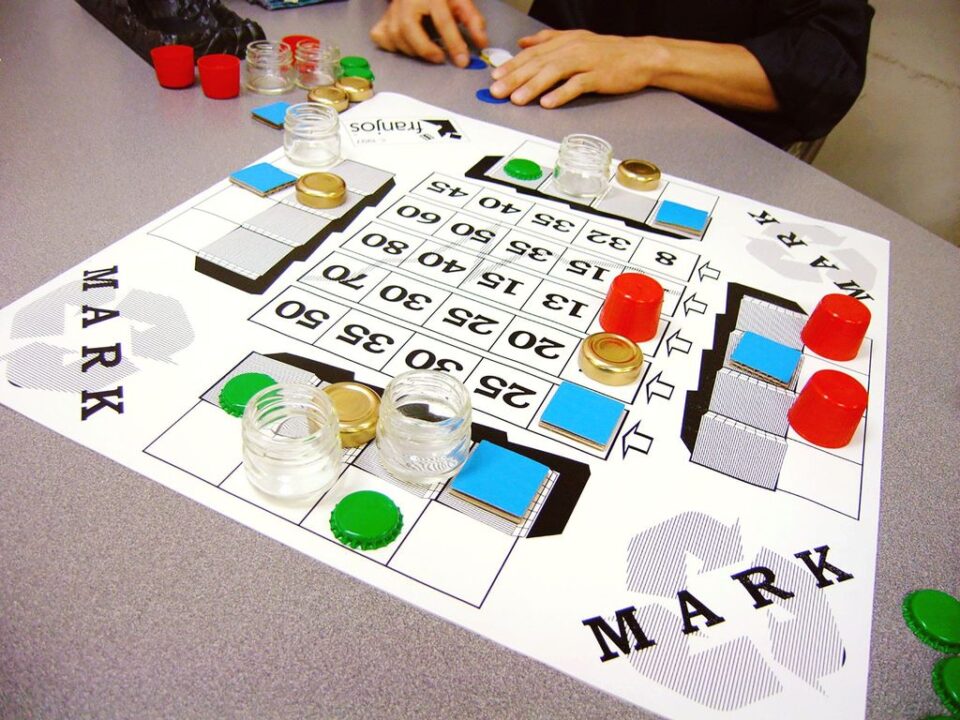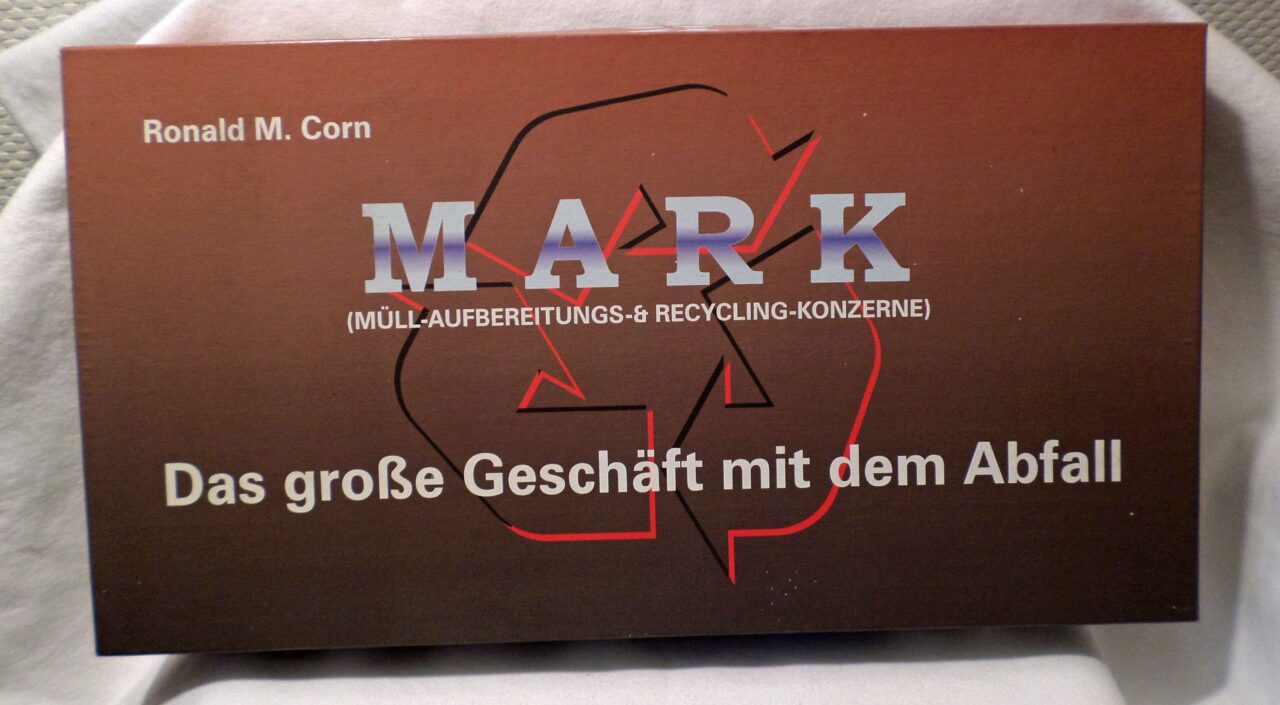Welcome to my review of the board game Mark. Picture this: a game night, a bunch of friends, and some snacks. You pull out Mark, and the night takes a fun twist. This game brings out the strategist in everyone, with its vibrant art and lively player interactions. But, it’s not all roses. We have some balance concerns to address. So, keep reading to find out if Mark deserves a spot on your game shelf!
How It Plays
Setting Up
First off, lay out the board and shuffle the deck of cards. Each player picks a color and takes the matching tokens. Arrange the resource piles and set the marker on the start space. Now, you’re all set to roll the dice and get going!
Gameplay
Players take turns rolling dice and moving their tokens around the board. Land on a special space? Draw a card and see what happens! Trading resources and striking deals with other players can turn the tide in your favor. Lucky rolls may help, but strategic thinking goes a long way.
Winning the Game
To win, gather the most points by the time the final card is drawn. Earn points by completing objectives and collecting resources. The player with the highest score at the end is the grand champion! High-fives all around for a game well played.
Want to know more? Read our extensive strategy guide for MARK.
Game Mechanics and Balance: A Close Look at “Mark”
Alright folks, let me tell you the tale of a board game night where “Mark” took center stage. If you’ve ever dipped your toes in the thrill that is board gaming, then you’ll know how crucial mechanics and balance are. “Mark” tries to deliver on both fronts, but let’s break it down.
First off, the game mechanics in “Mark” are quite intriguing. I remember gathering with my pals, armed with snacks and our game faces, ready for a showdown. The rules were easy to grasp, which is always a win for our group. Nobody wants another Monopoly debacle, right? The game moves smoothly with clear directions, keeping everyone in line and the game flowing. No one’s left scratching their heads thinking, “Why on earth did I pick this game?” I’m looking at you, “Complex Strategy Games.”
On the flip side, balance is where “Mark” stumbles a bit. In our epic weekend brawl, we noticed that the scales tipped in favor of certain strategies. My buddy Tim, forever the strategic swindler, found a loophole that made him unstoppable. And of course, he lorded it over us all night. The game could benefit from a bit more balance to keep every player on their toes and the winner uncertain till the very end. It’s like having a delicious pie but forgetting the sugar—something feels off. But hey, no game is perfect, right?
Next up, we’ll chat about how “Mark” handles player interaction and engagement, because that’s where the magic truly happens.

Player Interaction and Engagement in ‘Mark’
As a board game enthusiast, I must say, ‘Mark’ nails the player interaction aspect, like a salsa dancer nailing every beat. Right from the get-go, players are thrown into a dynamic environment where interactions are not just encouraged; they’re unavoidable! It’s like being at a family reunion where everyone wants to talk at the same time. This game’s mechanics urge players to communicate, negotiate, and sometimes, in my friend Carl’s case, bluff their way out of sticky situations.
The core of ‘Mark’ is based on the players trying to outwit each other with strategic moves and clever decision-making, kind of like when you try to outsmart the vending machine into giving you two candy bars instead of one. Each round, you’re watching others like a hawk, trying to predict their next move while countering it with your own. It keeps you on your toes like a cat in a room full of rocking chairs.
Everyone gets involved, which is fantastic for engagement. This means no one’s stuck twiddling thumbs or checking their phone. Even folks who are usually shy at our game nights, like Sally, found themselves jumping in with surprising enthusiasm. The game keeps everyone alert and involved, making it hard for anyone to just sit back and be passive. But hey, who wants a game where you might as well be watching paint dry?
We’ll wrap up this chat on the fun interactions and shift our focus to the replayability and game length of ‘Mark’, which might just tickle your fancy.
Replayability and Game Length: Unlocking the Fun in ‘Mark’
When it comes to board games, replayability is like the mysterious condiment you never knew you needed until it’s missing! With ‘Mark’, each game offers a new, tasty experience. I’ve lost count of how many times we’ve pulled it out for game night. Why? Because it’s like that favorite movie—no matter how many times you watch it, you still find it exciting.
The design of ‘Mark’ ensures that each game session feels fresh. The variable setup options keep things unpredictable, and trust me, surprises in board games are way better than surprise chili peppers in your pizza. The game length is also a winning factor. It hits that sweet spot where you’re engaged but not stuck like gum under a school desk for hours.
Each session runs about 60-90 minutes, which is perfect for squeezing in a game after dinner or even on a lunch break if you feel like living on the edge. ‘Mark’ allows for stories and strategies to develop without overstaying its welcome. Plus, players of all levels can jump in without needing a GPS to navigate complex rules. This balance means ‘Mark’ isn’t gathering dust on my shelf. It’s more of a constant visitor at gatherings, like Aunt Edna who brings cookies.
Speaking of things that keep you interested, let’s peek into the art and component quality next. You won’t believe what we discovered!
Exploring Art and Component Quality in the Board Game ‘Mark’
Ah, the art of ‘Mark’ – not the guy at the end of the bar, but this board game I’m talking about. Let me tell you, it’s as if Picasso decided to swap brushes for board game pieces. The artwork in ‘Mark’ is engaging, vibrant, and frankly, makes me want to frame the board and hang it in my living room. I mean, who knew a board game could double as wall art?
Component quality might sound like a fancy term, but it’s really just about how the pieces hold up to a night of heated gameplay. The pieces of ‘Mark’ are a delight. They’re sturdy and feel like they could survive a fall off the table after an overzealous victory cheer. My friends have been known to get a bit too excited, throwing pieces in the air, accidentally trying to juggle them. Trust me, these components can take it.
The cards included in the game are durable and don’t bend even when my clumsy friend, Tim, decides to shuffl– I mean, manhandle them. It’s like they’ve got some secret anti-wrinkle coating. And the colors! They pop like a bag of Skittles, and the detailed illustrations on each card keep you gazing long after your turn is over.
So, do I recommend ‘Mark’? For a game with such artistic flair and outstanding component quality, absolutely. It’s like buying a masterpiece where you don’t even have to bid. Snag this beauty the next time you’re at the game store.
Conclusion
With all that said, ‘Mark’ proves to be a lively and engaging board game that packs a punch with its vibrant art and durable components. While the mechanics are generally easy to wrap your head around, some balance issues might make you scratch your noggin. Luck rears its head more than a few times, and if that’s a stickler for you, beware. However, it shines with its player interaction, ensuring everyone’s involved and having a grand ol’ time. Replayability is high, thanks to varying strategies and the fact every game feels fresh. With a playtime of 60-90 minutes, it fits snugly into game nights. Overall, ‘Mark’ earns a solid 3 out of 5 stars in my book.


